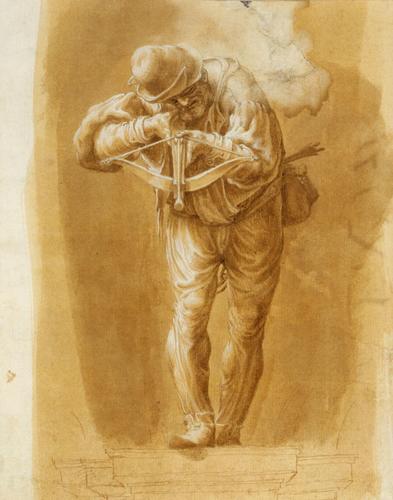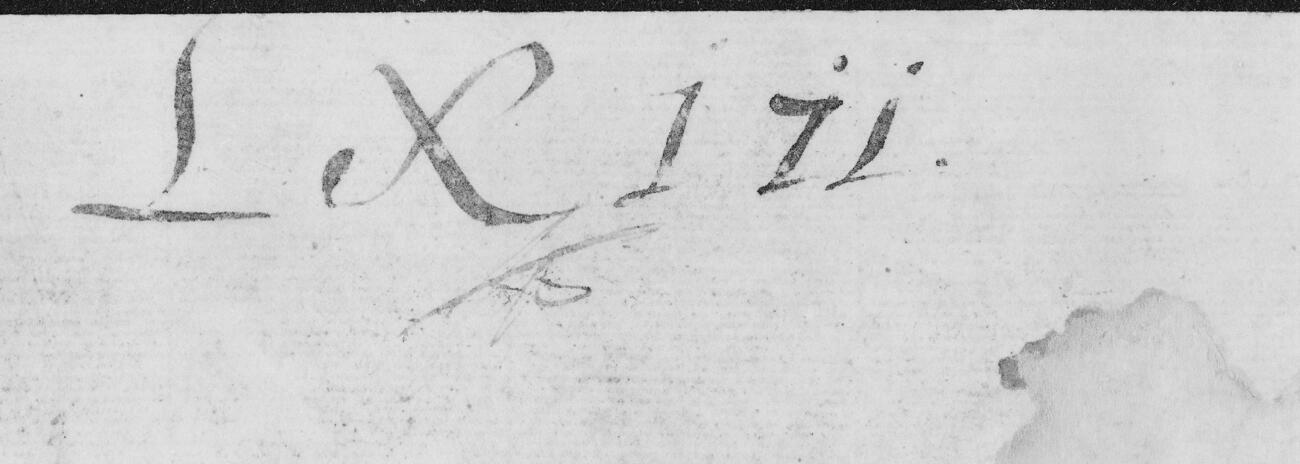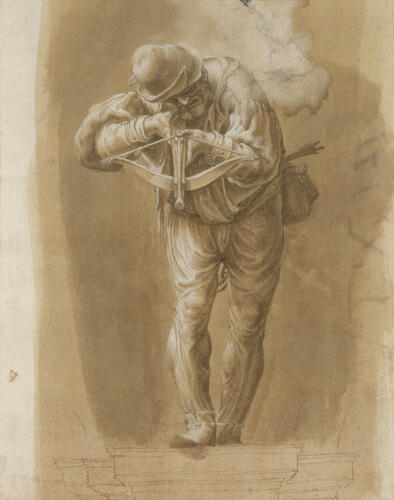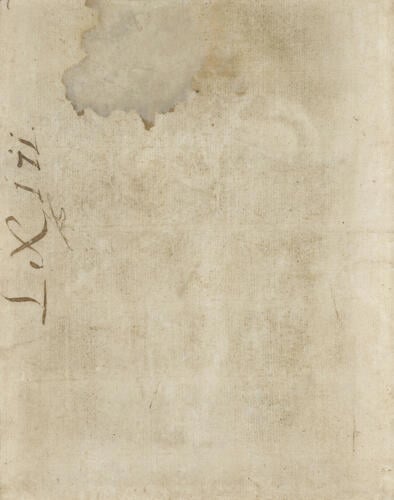-
1 of 253523 objects
A crossbowman c. 1575
Pen and ink with wash and white heightening, over black chalk | 25.2 x 19.8 cm (sheet of paper) | RCIN 904791

Lelio Orsi (1508/11-87)
A crossbowman c. 1575

Lelio Orsi (1508/11-87)
A crossbowman c. 1575




-
A drawing of a crossbowman, standing on a pedestal firing down at the viewer; probably a study for the façade of Orsi's brother’s house in Reggio Emilia. Inscribed on the verso, the large roman numerals LXiii, with a paraph.
The crossbowman appears at the centre of four drawings of an elaborate façade, in Modena (inv. 1265), Chatsworth (Jaffe 662), Princeton (inv. 47-14) and the Louvre (inv. 21112; all these are reproduced in E. Monducci and M. Pirondini (eds), Lelio Orsi, Reggio, 1987-8, pp. 209-11). The Modena drawing is probably the original, but is poorly preserved and difficult to read; the number of surviving copies testifies to the celebrity of the design. The façade features Orsi’s coat of arms with two bears (a pun on his surname), which also appears on his tomb slab. Orsi no doubt wished the painting to act as an advertisement for his skills, and he filled the modest surface area with an illusionistic tableau of fire, cloud, draperies, struggling nudes, collapsing columns, and here the amusing figure of a crossbowman aiming his bolt into the street below. The composition bears obvious similarities to Giulio Romano’s celebrated fresco of the Giants buried under Pelion and Ossa in the Sala dei Giganti of the Palazzo Te, Mantua, of 1532-4, combined with the lithe muscularity of mid-century artists such as Tibaldi and Primaticcio.
In connection with one of the drawings of the façade (probably that now at Princeton), the art historian Mariette described an engraving of a crossbowman, attributed to Cornelis Cort, supposedly dated 1570 and ‘after the painting in Reggio’. He seems to have been referring (with a slip over the date) to an anonymous engraving inscribed 'Regij. 1579', in which the figure is close enough to that here to conclude that it was copied from Orsi (P. Parshall and N. Takahatake, 'Cherubino Alberti, Lelio Orsi and Cornelis Cort', Print Quarterly, 2007, pp. 430-1, attribute the print to Alberti). The inscription locates the motif in Reggio, and despite Mariette’s apparent assumption (rather than knowlege) that the inscription referred to the existence of an easel painting, it is probable that the façade design was actually executed; and further, that it was not that of Orsi’s own house (which was in Novellara), but that of his brother, Gianbattista, who lived in Reggio and with whom Lelio presumably lodged when he was working in that city. While the date of 1579 on the print probably refers to the execution of the engraving rather than the design of the façade, the boldness of the drawing does support a date in the 1570s. Orsi’s movements during that decade are poorly documented, but he was in Reggio in 1576, when he received payments for work including the scheme to fresco the apse of San Prospero (never executed, and subsequently painted by Camillo Procaccini).
The drawing is one of many by Orsi (others include RCIN 904836 and 910900) that bear on the verso a large roman numeral drawn with the brush, followed by an unidentified paraph or calligraphic mark of ownership. This has been interpreted by F. Kossoff (in Italian Drawings from the Ashmolean Museum, Wildenstein Gallery, London, 1970, no. 31) as the mark of the Gonzaga of Novellara, in whose collection an inventory of 1728 listed ‘cento pezzi di disegno in grande’ by Orsi.
M. Clayton, The Art of Italy in the Royal Collection: Renaissance and Baroque, London 2007, no. 50.Provenance
Possibly from the collection of the Gonzaga family at Novellara. Listed in George III’s Inventory A, c.1800, p. 85, ‘Scuola Veneziano’, p. 14, as ‘Paolo Cagliari detto Paolo Veronese’.
-
Creator(s)
-
Medium and techniques
Pen and ink with wash and white heightening, over black chalk
Measurements
25.2 x 19.8 cm (sheet of paper)
Other number(s)